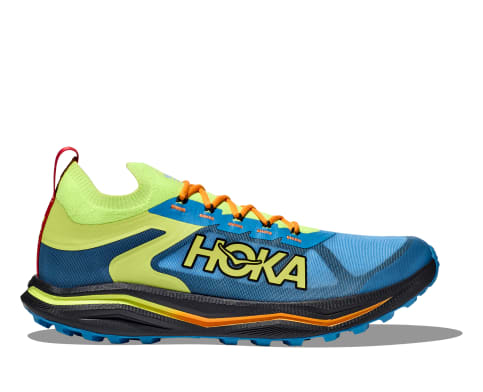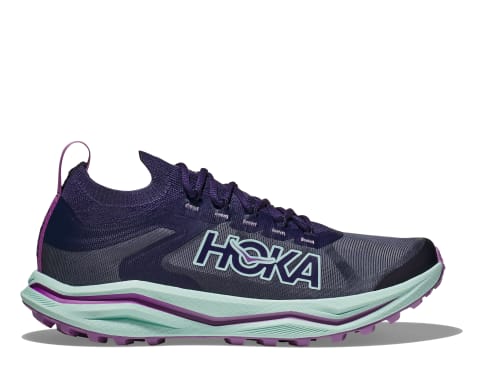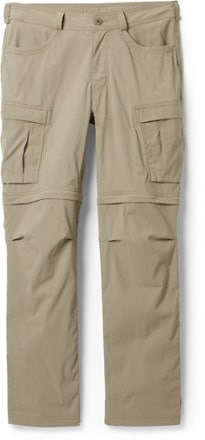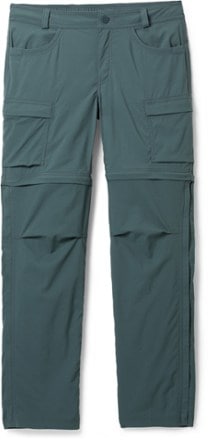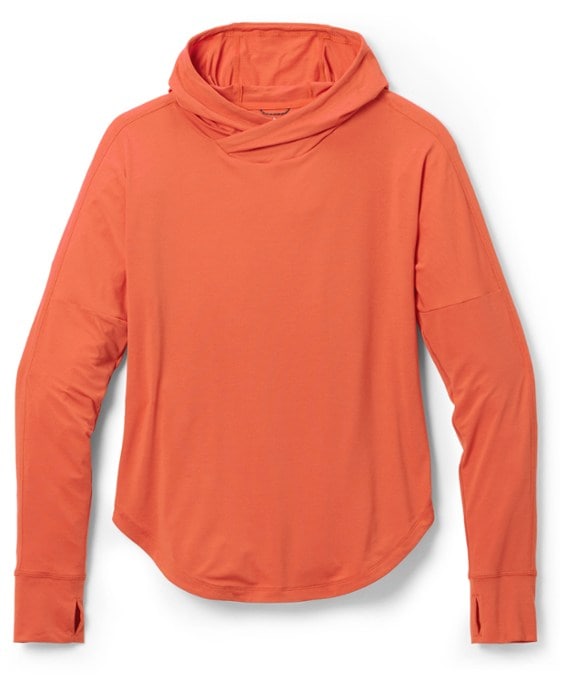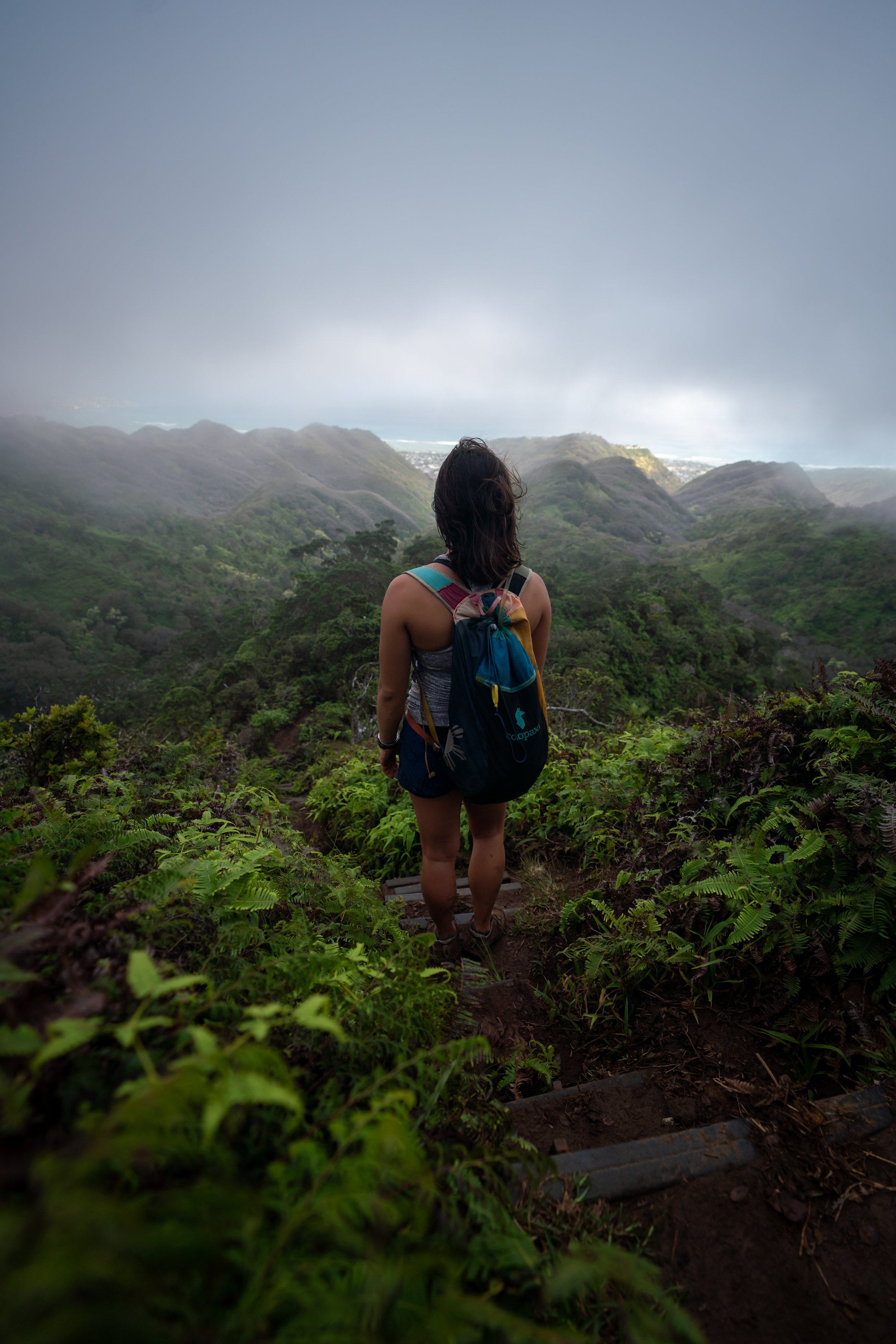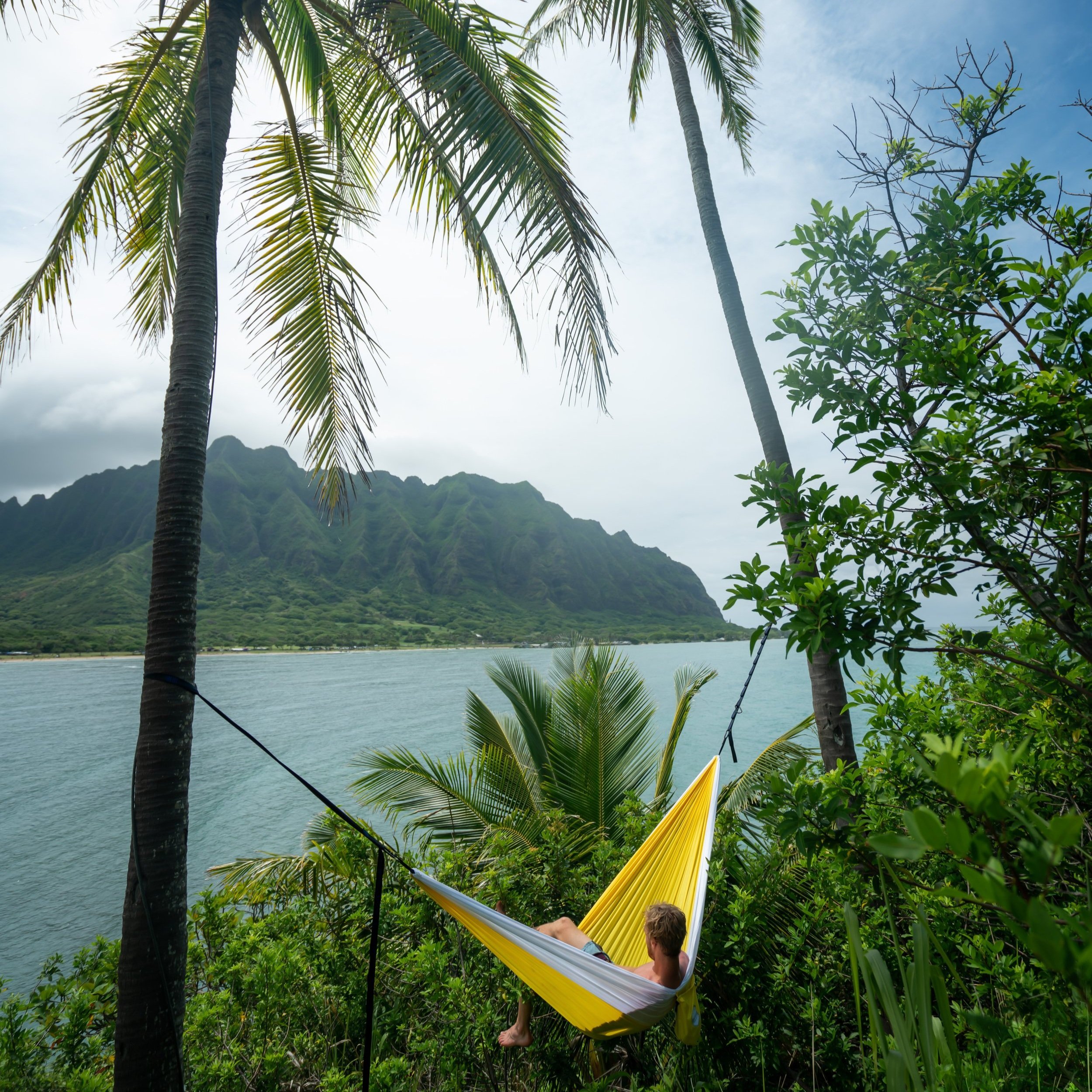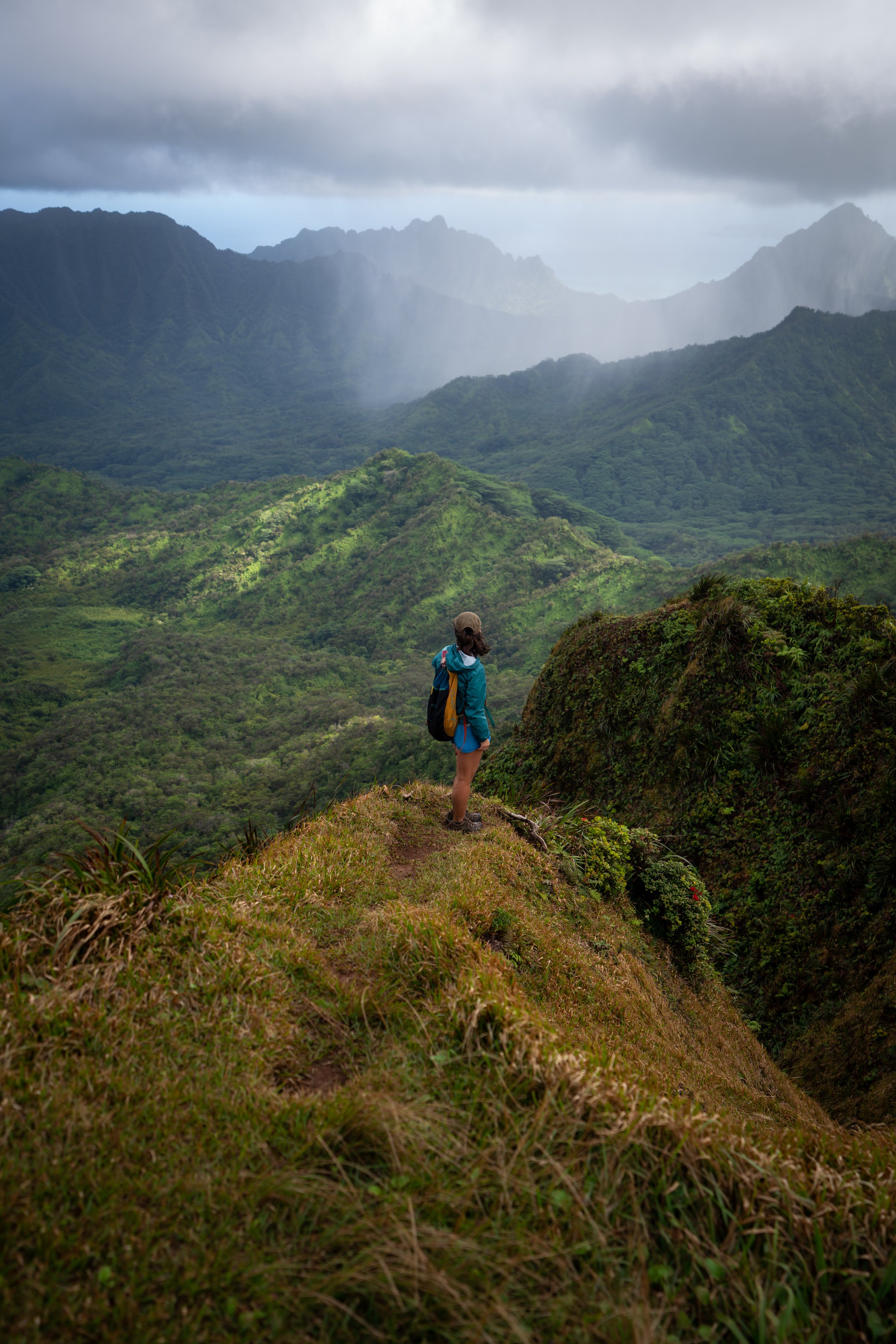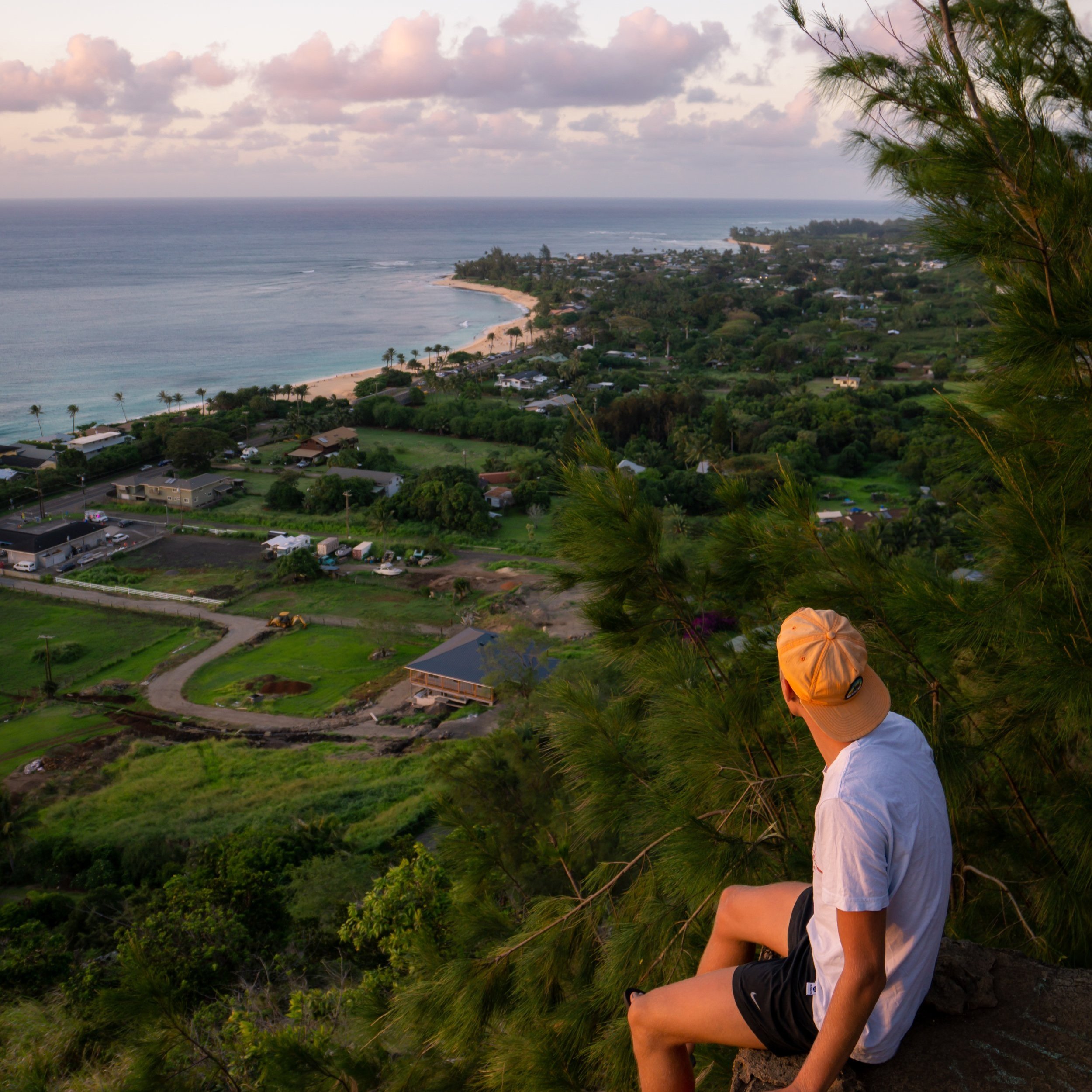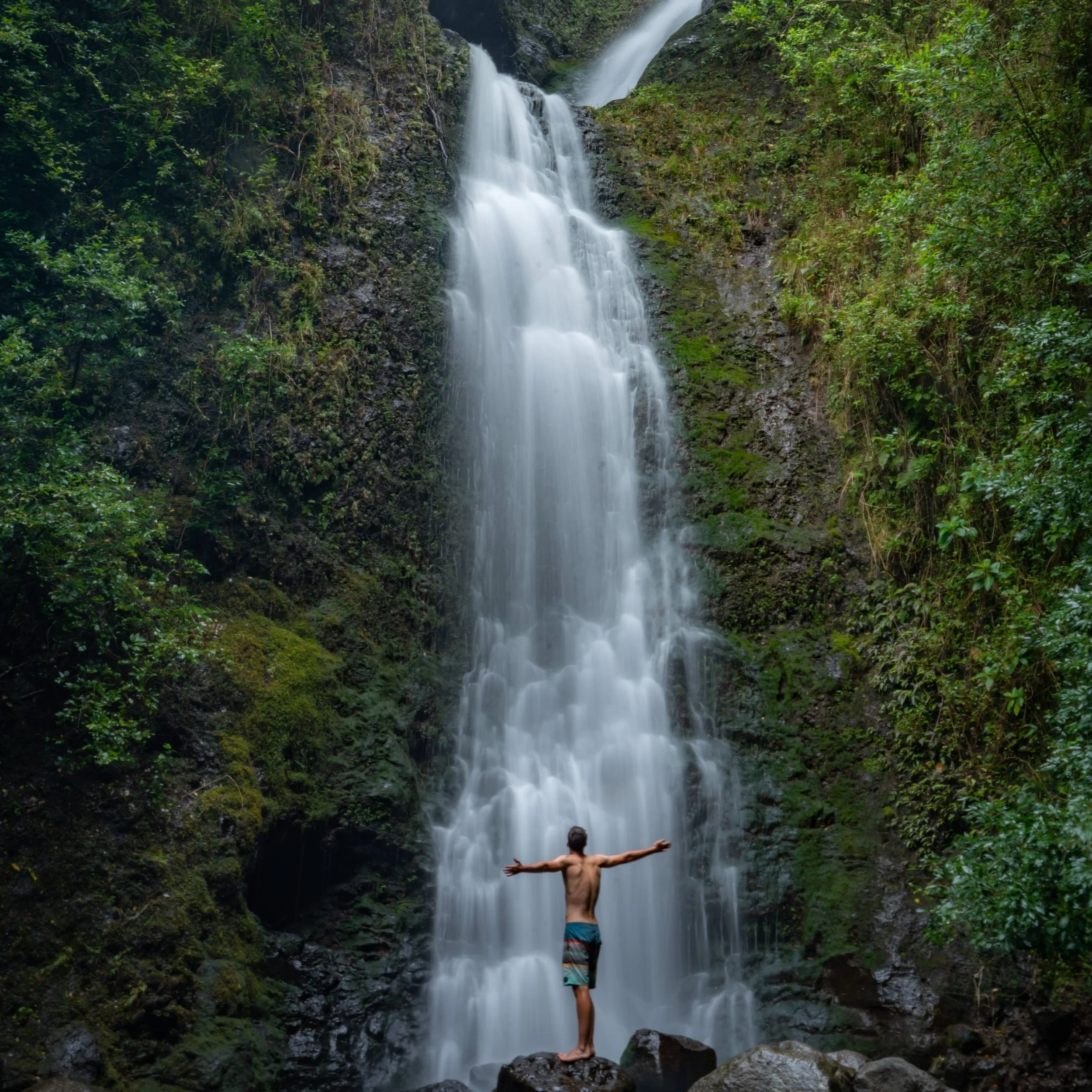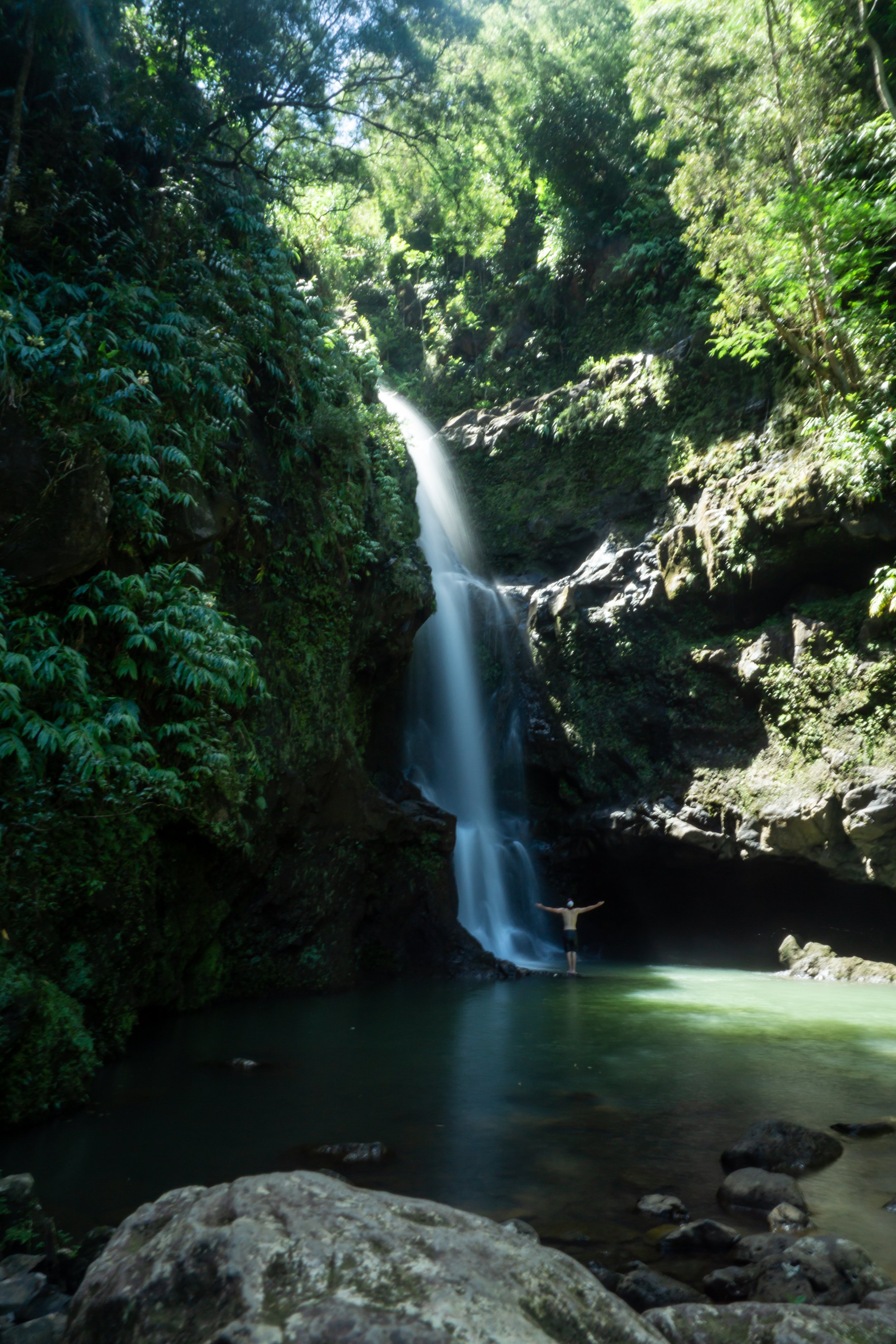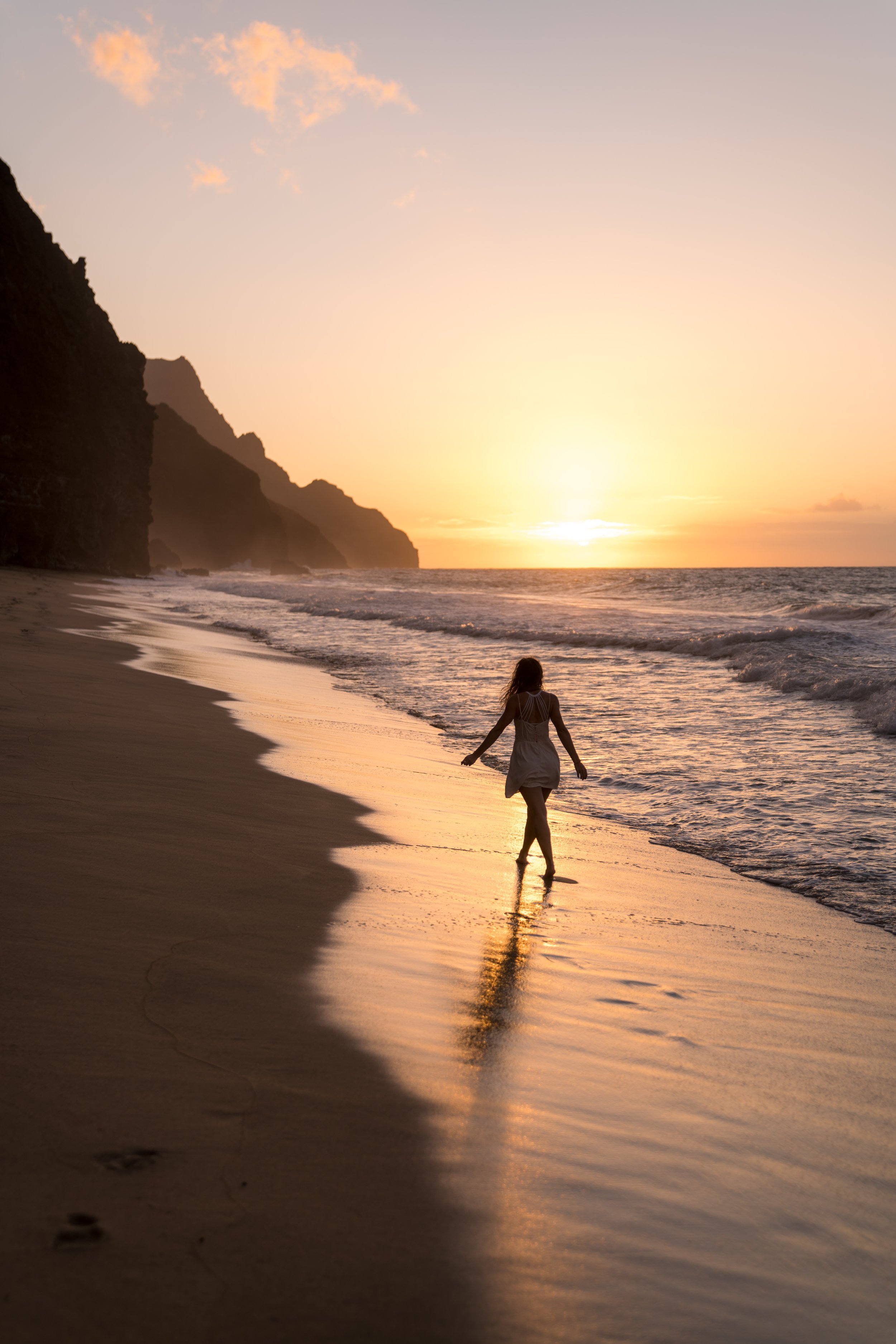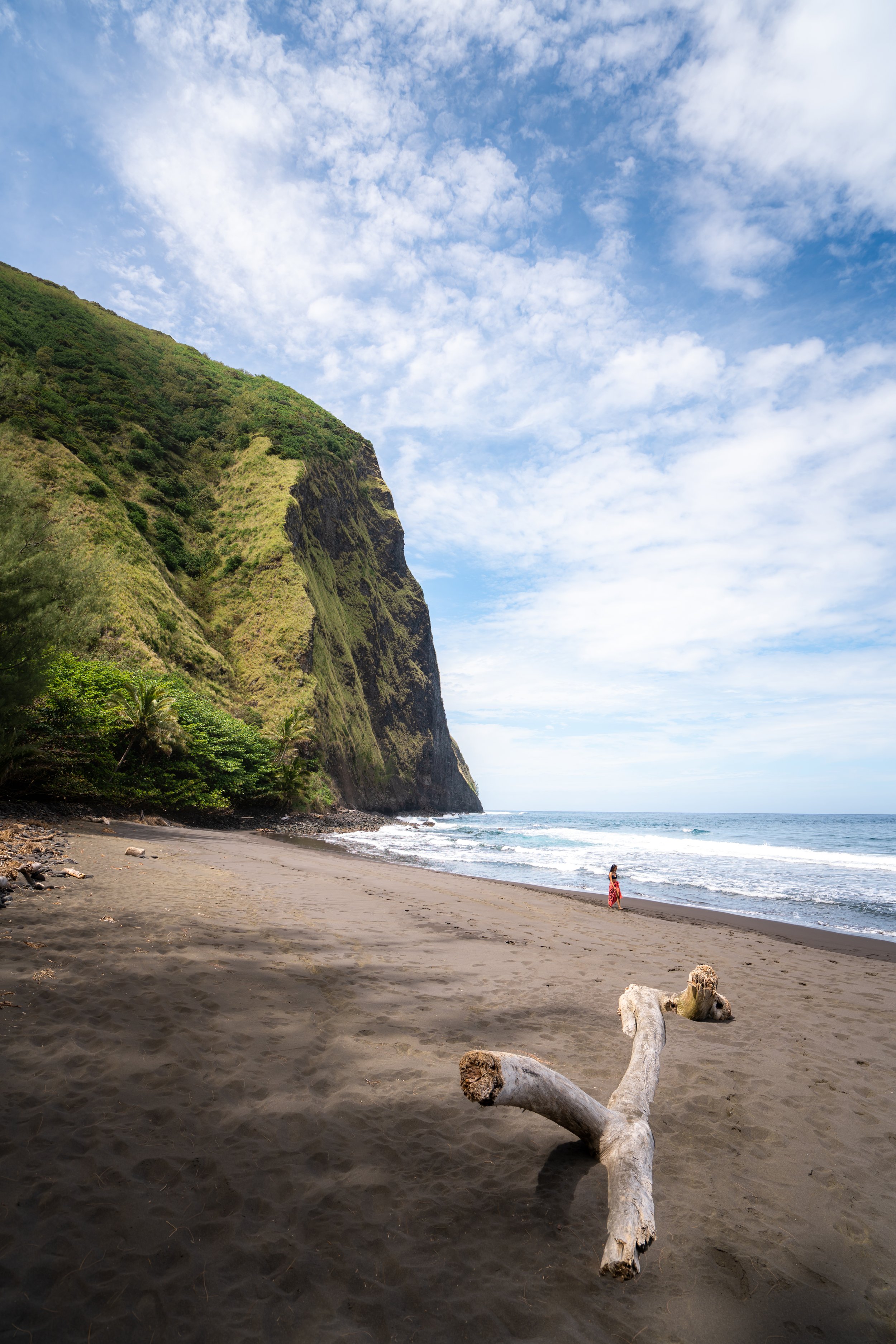Hiking the Waʻahila Ridge Trail to Mt. Olympus (ʻAwaʻawaloa) on Oʻahu, Hawaiʻi
Distance: 5.6 miles / 9.0 km
The Waʻahila Ridge Trail in the southern Koʻolau Mountains on Oʻahu is one of my favorite ridge hikes on the town side of the island, and in my opinion, it’s one of the best day hikes near Waikīkī!
I say this for a few reasons. The first is that Waʻahila Ridge is a very well-trafficked trail, meaning the overgrowth is much less noticeable and, in most cases, not an issue compared to other Oʻahu ridge hikes, like the nearby Wailupe Loop Trail. However, what’s perhaps even more important is that from the summit, there are amazing views of Kaʻau Crater to the east, which is one of my favorite ways to enjoy the beautiful crater without doing the longer and more involved Kaʻau Crater Trail from Pālolo Valley.
Waʻahila Ridge Trailhead Parking
Parking for the Waʻahila Ridge Trail is located at the very top of St. Louis Heights in the Waʻahila Ridge State Recreation Area.
Out of caution, consider the Waʻahila Ridge Trailhead to be a high-crime area for petty theft, meaning you should never leave visible bags or anything valuable in your car.
Google Maps Directions: Waʻahila Ridge State Recreation Area
My Hawaiʻi Hiking Checklist
Osprey 3L Water Bladder - The Osprey 3L water bladder is the most universal hiking and backpacking water bladder on the market, and it’s my go-to because of the slide-off seal that allows it to be quickly filled from the top. Additionally, individual parts are easily replaceable, such as the bite valve.
Blister / Heel Protectors - I swear by these cheap, amazing heel protectors to prevent blisters for nearly every kind of hiking and backpacking that I do!
Black Diamond Headlamp - Personally, I recommend the Black Diamond Storm because it is one of the brightest, lightest, and longest-lasting headlamps on the market—and trust me, the weight-to-battery-life ratio really does matter!
Hiking / Trail Running Shoes - Depending on the type of trail, I prefer to use either the Keen Targhee for longer, more rugged hiking or the HOKA Zinal Trail-Running Shoe for lighter, less intense trails. In either case, both have been amazing to me for many years across countless environments, and both can be found in men’s and women’s sizes. - (Men’s Keen / Women’s Keen) (Men’s HOKA / Women’s HOKA)
Waterproof Rain Shell - You never know when it may rain, and I’ve learned over the years that a rain shell is far better than a rain jacket. By this, I mean that it’s best to have something that the water will roll right off of, which is why I recommend the Patagonia Torrentshell 3L available in both men’s and women’s sizes.
High SPF Sunscreen - Packing high-SPF sunscreen is a must for long days outside!
Hiking the Waʻahila Ridge Trail
The Waʻahila Ridge Trail begins within the beautiful Cook Pine forest at the very top of the parking lot in Waʻahila State Recreation Area and extends for roughly 2.8 miles (4.5 km) to the Koʻolau Summit atop Mt. Olympus.
This water tank is always a nice sign that you’re nearing the trailhead at the end of the long return hike.
After roughly 0.3 miles (0.5 km), the Waʻahila Ridge Trail makes a hard left turn off the ridgeline.
Once the Waʻahila Ridge Trail regains the ridge, the trail begins to traverse a number of rolling hills before the steeper, more significant drops shortly ahead.
Through these beginning sections, ʻUhaloa, ʻIlima, and ʻIeʻie are the three most prominent native plants that can be found along Waʻahila Ridge.
At about 0.5 miles (0.8 km), the trail reaches the start of the biggest descent on Waʻahila Ridge—one that will inevitably have to be re-climbed on the hike out.
At these steep ledges, there’s always an easy workaround, as opposed to going straight over.
Shortly past the first descent, Waʻahila Ridge comes to this second and much steeper drop.
About halfway down the second descent, the Waʻahila Ridge Trail reaches a near-vertical drop.
However, there is an easier route on the right-hand side of the ridge that makes for a better place to scramble around this section.
Following the steep descent shown above, the Waʻahila Ridge Trail will come to this split.
Here, go right to stay on the correct trail, as the path to the left isn’t better or more direct. Rather, it’s more overgrown until it eventually returns back to the correct trail when both sides meet again.
For those who may be interested, trail running the first 1.5 miles (2.4 km) to the Kolowalu junction is popular among locals—especially in the evening, when the golden light begins to shine across these southern Koʻolau ridges!
That said, these are my preferred trail-running shoes, which not only work great on Waʻahila Ridge and others like the ʻAiea Loop Trail, but they are also my go-to hiking shoes for much less overgrown trails outside of Hawaiʻi.
This viewpoint of Mānoa Valley, at roughly 1.4 miles (2.3 km) from the trailhead, is one of the most popular turnaround points on Waʻahila Ridge prior to Pūkele Hill and the Kolowalu junction.
Waʻahila Ridge-Kolowalu Junction
At roughly 1.5 miles (2.4 km), the Waʻahila Ridge Trail splits with the Kolowalu Trail that connects Waʻahila with the Puʻu Pia Trail at the bottom of Mānoa Valley.
That being said, it typically wouldn’t make sense to hike Kolowalu from Waʻahila Ridge unless you had planned to create a loop with the Mānoa Middle Ridge and the KST.
In any case, go right at this split to continue up Waʻahila Ridge to the Koʻolau Summit and Mt. Olympus.
Read My Separate Post: Kolowalu Trail
After the Kolowalu junction, the Waʻahila Ridge Trail continues through a mixed Strawberry Guava-Koa-ʻŌhiʻa forest before the ridge begins two separate steep climbs just below Pūkele Hill.
Moa is always a cool but a not-so-obvious native find in Hawaiʻi’s forests!
This is the first of the two steep climbs before Pūkele Hill.
While ropes on popular hikes like Waʻahila Ridge get replaced much more often than other Oʻahu trails, it’s never a bad idea to carry your own.
This little peak on the ridgeline is Pūkele Hill, the second-most popular turnaround point on the Waʻahila Ridge Trail.
When the trail comes to this steep drop, there’s either the option scoot straight off the ledge or make a hard right down the easier path around it.
There’s no shortage of steep descents on Waʻahila Ridge!
This is the bottom of the second and final steep ascent before Pūkele Hill.
Pūkele Hill
Pūkele Hill is the largest grassy clearing on the Waʻahila Ridge Trail, and the viewpoint to the south toward Mānoa Valley is, without a doubt, one of the best sunset spots on Oʻahu!
However, I only recommend catching the sunset this high up Waʻahila Ridge for confident, skilled hikers who are comfortable with the roughly 1.8-mile (2.9 km) hike back in the dark—which is all to say, carry a good headlamp and park outside of the State Recreation Area for such an adventure!
As Waʻahila Ridge moves higher, the trail becomes slightly more overgrown, as the majority of hikers turn around at Pūkele Hill prior to the summit.
Now, Waʻahila Ridge has nowhere near the same overgrowth as other southern Koʻolau ridges, like Kūlepeamoa Ridge, but even so, some hikers may still prefer to wear pants for the overgrowth, as well as the mud, which is fairly unavoidable below the summit.
The pants below are my recommendations that hold up the best with the overgrowth here in Hawaiʻi, but with any hiking pants that need to be durable, make sure that they are at or near 100% nylon. This is really the most important factor!
Mt. Olympus, also called ʻAwaʻawaloa, is the peak in the center of the photo below.
When Waʻahila Ridge leaves the Strawberry Guava forest behind on the uppermost elevations, the trail becomes much more exposed, which is why I recommend hiking in a hooded sun shirt.
From this viewpoint, the final two steep ascents leading up to Mt. Olympus can best be seen.
This is the first peak on the ridgeline, and the final peak (Mt. Olympus), furthest in the distance.
This is the bottom of the first ascent, which is the longest of the two.
It must be said that the erosion leading up to the summit is quite severe on Waʻahila Ridge, and I mention this to ask everyone to do your part to minimize your impact.
This clearing marks the top of the long first ascent and the bottom of the second.
That being said, the second steep climb up to the summit is undoubtedly the most challenging, given the severity of the erosion shortly ahead.
At this point, Kaʻau Crater to the southeast, along with other notable summits like Wiliwilinui, becomes more and more visible on the uppermost elevations of Waʻahila.
This erosion on the Waʻahila Ridge Trail, prior to the Koʻolau Summit, is more significant here than in any other part of the hike, which can be especially challenging if the trail is wet.
Again, consider carrying your own ropes if you want the best assurance for everyone in your party.
Koʻolau Summit Trail (KST)
At the top of the steepest and most eroded ascent, the Waʻahila Ridge Trail reaches the flat spot shown in the photos below.
This is where Waʻahila Ridge meets the Koʻolau Summit Trail (KST), but this is not the summit of Mt. Olympus. Rather, the true summit follows the KST for roughly 0.1 miles (0.2 km) up the ridgeline to the south (right) to reach ʻAwaʻawaloa.
Mt. Olympus (ʻAwaʻawaloa) is the next closest peak to the south of Waʻahila Ridge.
Mt. Olympus (ʻAwaʻawaloa)
The end of the Waʻahila Ridge Trail is the prominent summit of ʻAwaʻawaloa, more commonly known as Mt. Olympus.
I say "prominent" because, on a clear day, Mt. Olympus stands above all the surrounding peaks and can be seen from as far away as Waikīkī and Kailua on the east side of Oʻahu.
Some notable places visible from the top include Kōnāhuanui to the north, the Lanikai Pillbox Trail and Kaʻau Crater to the east, as well as more distant locations such as Koko Head when looking south down the Koʻolau Mountains.
Koʻolau Summit Trail (KST)
Just past the summit, there is a beautiful open area to enjoy the views of Kaʻau Crater.
On a different note, don’t hike on the KST past Mt. Olympus unless you know exactly what you’re getting into.
The decent off of Mt. Olympus is very steep and exposed, and after this steep drop down a few hundred feet, the overgrowth picks up significantly until you reach the west rim of the Kaʻau Crater.
In the other direction, the next best trail is the Mānoa Middle Ridge, but even still, I only suggest traversing the summit to hikers who are familiar with what’s to come and the trails that descend back down.
Read My Separate Post: Koʻolau Summit Trail (KST)
Native Plants on Waʻahila Ridge
On the first mile up Waʻahila Ridge, native Hawaiian plants include ʻIlima, ʻUhaloa, ʻIeʻie, Palaʻā, and sometimes an occasional ʻŌhiʻa tree. However, like most Hawaiʻi hikes, the lower elevations of Waʻahila Ridge are dominated by non-native, invasive species such as Cook Pine, Strawberry Guava, Christmas Berry, and Palm Grass, to name just a few.
Nevertheless, once Waʻahila Ridge ascends to the upper elevations, there are countless native plants to look out for, including ʻĀkia, Alani, Kāwaʻu, Kōlea, ʻŌhiʻa lehua, Koa, Uluhe, and ʻŌhiʻa ha—to truly name only a few.
If you would like to learn more about these and many other native Hawaiian plants from across the islands, I encourage you to check out my separate post linked below.
Read My Separate Post: Native Hawaiian Plant Guide
More Oʻahu Adventures
If you’re interested in reading about some more amazing Oʻahu adventures, check out my separate posts below!
Best Hotels & Restaurants in Waikīkī
If you’re trying to decided where to stay on Oʻahu, check out my top 10 list for the best resorts and restaurants in Waikīkī.
I break down what makes one hotel a better choice over another, so that you can find the best fit for your stay on the island.
Read My Separate Post: Best Waikīkī Hotels & Restaurants
HNL Airport-Hotel Shuttle
Prices on ride-share apps like Uber/ Lyft cannot beat the price of booking your hotel shuttle prior to arrival. I say this because there are additional fees for ride-share airport pick-ups at Honolulu Airport (HNL), which is why I recommend booking your transportation in advance using the options below.
Additionally, the last option below will go as far as the Ko ʻOlina Resorts on the West Side and Turtle Bay on Oʻahu’s North Shore!
Best Way to Book Rental Cars!
I travel quite a bit, and I know firsthand that finding a good rental car deal can be a challenge, but that’s why I recommend comparing all of your options with Discover Cars.
In short, Discover Cars is a well-known, reputable business that allows you to search for the best deal across companies, and they have the best full-refund cancellation policy I’ve ever seen, valid up to 72, or sometimes even 48, hours prior to your reservation!
Book Here: Discover Cars
Visiting Other Islands
If you are visiting Oʻahu or heading to another island, check out some of my personal recommendations for Oʻahu, Maui, Kauaʻi, Molokai, Lānaʻi, and Hawaiʻi Island (Big Island) in these separate posts.
If you’re trying to decide which island is right for your visit, check out my overview about each island in the post below.
Read My Separate Post: What is the Best Hawaiian Island to Visit?
What is the Best Time of Year to Visit Hawaiʻi?
The weather in Hawaiʻi can often appear to be warm and beautiful throughout the year, but in my experience, there is a lot more to consider when planning what time of year to visit the islands, such as what island you are considering, what sides of each island do you plan to stay, what activities are you most interested in, the wildlife, and countless other nuanced variables that can all impact the type of trip you can expect to have.
For these reasons, I highly recommend reading through my separate article to not only understand my thoughts regarding the best time of year to come to Hawaiʻi but also what you need to consider based on the time of year that you plan to visit.
Read My Separate Post: What is the Best Time of Year to Visit Hawaiʻi?
10 Best Tours & Excursions on Oʻahu
There are a lot of different tour options to choose from on Oʻahu, but to make it easier to decide, I made a list of my favorite tours because some things simply are better with a local guide!
Read My Separate Post: Best Tours on Oʻahu
Safety
All hikes in Hawaiʻi should not be compared to trails outside of the islands, and hikers should exercise due caution on every adventure, given that many are extremely dangerous.
By this, I mean that Hawaiʻi is known for hot, humid weather, steep, dramatic, and unstable cliffs, and flash floods, which can occur without warning. Therefore, it is important that you check the local forecast, understand the physical condition of your entire group, and pack sufficient food and water before attempting any adventure.
Disclaimer
All information provided on this blog is for informational purposes only and is not intended to be a substitute for information or advice from qualified professionals or managing agencies.
Noah Lang Photography LLC makes no representations or warranties regarding the accuracy or completeness of the information provided here, and readers should use their own discretion, judgement, and seek professional advice where it is appropriate.
Furthermore, Noah Lang Photography LLC shall not be held responsible for any injuries, lost individuals, or legal issues arising from the use of information provided on this website, and if applicable, the above safety disclaimer should be referenced to provide a generic overview of the risks involved.
All said, the content on this blog is for the sole use of Noah Lang Photography LLC, and unauthorized use or reproduction of this content is strictly prohibited.
Disclosure
This post is not sponsored.
However, some of the links in this post are affiliate links, which means that I may earn a small commission if a purchase is made through one of those links. This commission comes at no additional cost to you, and I only recommend products that I personally use and believe will add value to my readers. Thank you for your support, which enables me to continue creating more!
To read the full privacy policy, click here.

About This Blog
Noah Lang Photography, also known as @noahawaii, is 100% reader-supported!
I do not accept guest articles or sponsored content of any kind on my blog, which is why, if you enjoy the outdoor and travel content I create, please consider buying me a coffee!
I appreciate your support, which helps me continue to keep this blog alive!










